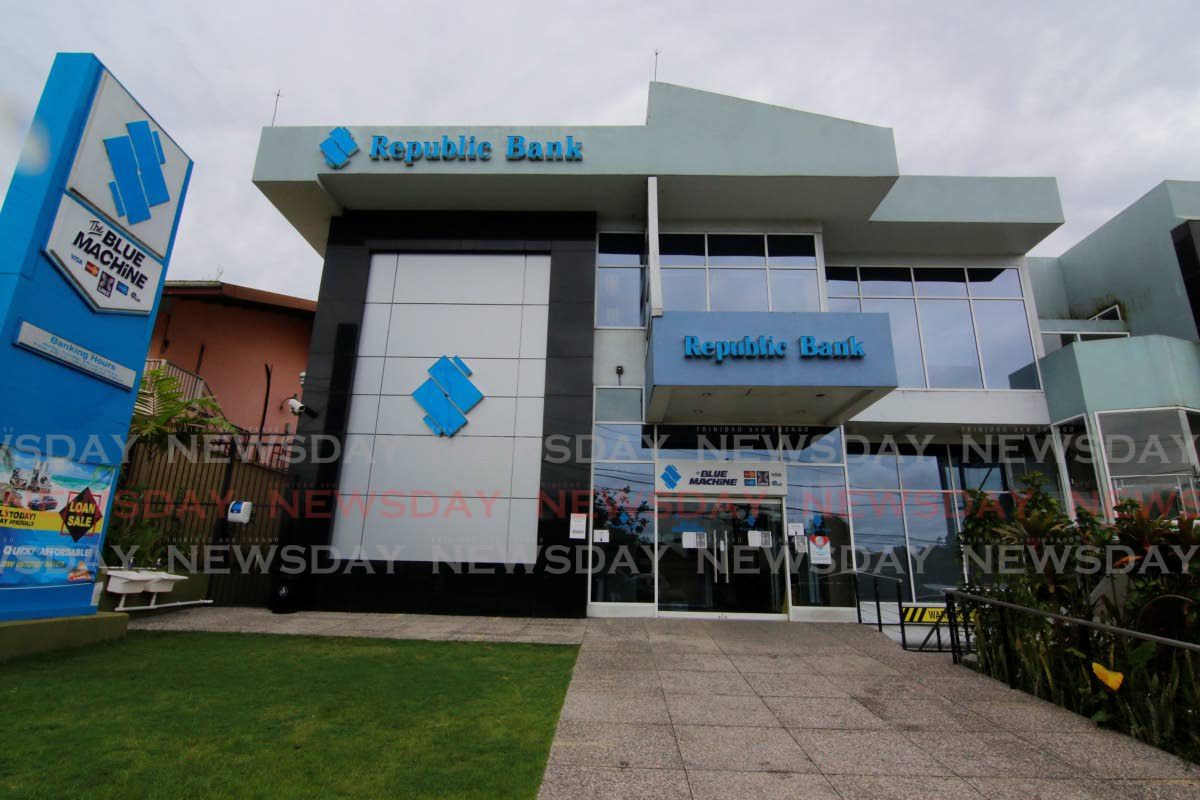By Ryan Hamilton-Davis
Copyright newsday

STANDARD & Poor’s (S&P) has revised the outlook on two majority state-owned banks – First Citizens and Republic Bank – from stable to negative.
The revision was shared on S&P’s website on September 26, less than a month after it gave First Citizens a rating of “BBB” or “stable,” in a ratings report on September 8.
It also followed S&P’s revised outlook for TT on September 25.
In a media release, the ratings agency restated that its long-term issuer credit rating for TT went from stable to negative, owing to the erosion of fiscal and external buffers over the years.
S&P said the revision “reflected the limited effectiveness of long-standing efforts to boost GDP growth and strengthen fiscal management.”
“As a result, on September 26 we revised the outlook from stable to negative on our long-term ratings on domestic lenders Republic Bank Ltd and First Citizens’ Bank Ltd,” S&P said.
“The sovereign ratings limit those on the banks because of their large exposure to the country in the form of loans and investments.”
S&P said it took into consideration that sovereign stress would affect the banks’ business operations and creditworthiness.
S&P added that both banks operate with a stand-alone credit profile of BBB, a notch above the long-term foreign currency sovereign rating.
For First Citizens, S&P said on September 8 that its strong capitalisation helps its creditworthiness, especially in distressed scenarios. S&P added that the bank also has good business diversification and a strong market position as the second-largest bank in TT.
However, even as it rated First Citizens as stable, it noted that TT’s reliance on the energy sector could bring added risk to the stability of business and operating conditions for the bank. Sluggish domestic and employment recovery could also eat away at the bank’s asset quality, S&P said on September 8.
It factored in First Citizens in the September 26 report that included Republic Bank.
“As a result a potential downgrade of the sovereign would result in a similar action for both banks,” S&P said in the September 26 report. “Therefore we revised the outlook on both banks following the same action on TT.”
Despite the revised outlook, S&P still views the banks’ creditworthiness as stable.
“We think the banks will continue benefiting from sound market positions in the banking system, solid income diversification and good earnings prospects,” S&P said.
“They will also continue to have sound capital, liquidity and credit loss reserves, protecting their creditworthiness from hypothetical strains on asset quality.”
S&P noted that the recent sovereign developments have no immediate impact on its risk assessments for the TT banking industry, which is the anchor point in giving ratings to TT banks. According to S&P, that anchor for local banks is currently bb+.
The banking industry country risk assessment incorporates ongoing sovereign risks and the expectations of the operating conditions for the next year. It said local banks benefit from moderate credit growth, stable asset quality, sound earnings and adequate liquidity to support the bank’s performance. However, it said it will continue monitoring longer-term implications from the ongoing government challenges and how that could affect business conditions for local banks.
What do S&P ratings mean?
The core purpose of S&P ratings is to evaluate the ability and willingness of an entity, whether it is a country, bank or other financial institution, to repay its debts. High ratings such as AAA is an indication of a lower risk of defaulting on loans and financial facilities, while lower ratings indicate a higher risk.
S&P assigns ratings to to both individual financial entities and overall creditworthiness of an entity. Investors use these ratings to make informed decisions about risks associated with different securities.
The ratings are as follows:
AAA – extremely strong protection against credit defaults.
AA, A, BBB – strong to adequate protection against losses.
BB, B, CCC – uncertain or vulnerable protection against losses from credit defaults.
CC, C, D – high degree of vulnerability or actual default.



